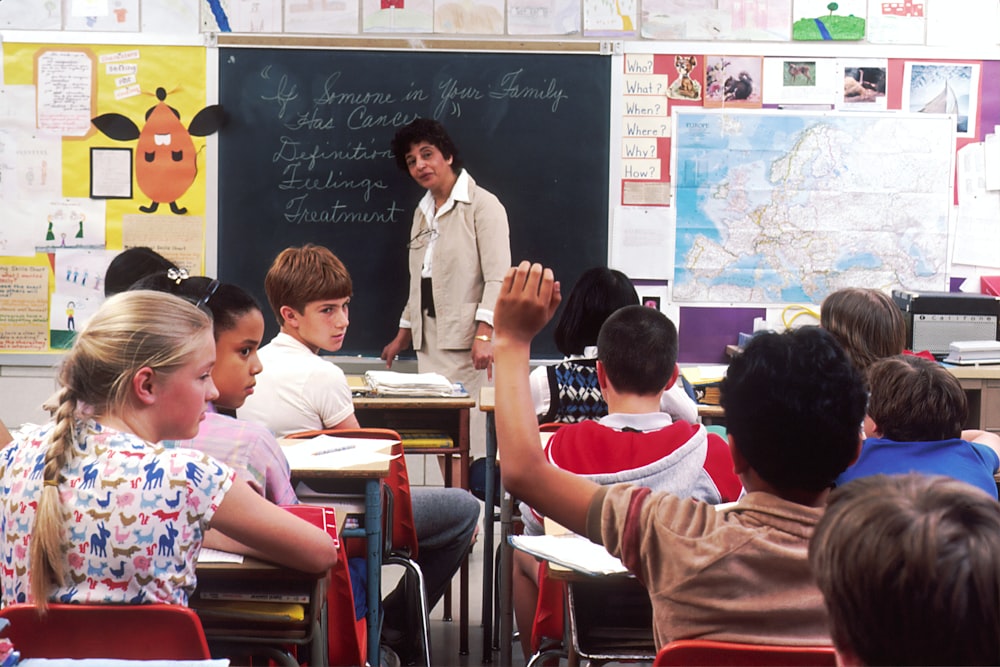- Confused between the IGCSE, GCSE and Cambridge O Levels? Here's how GCSE curriculum is compared to these two curriculums! Read more!
The most frequently asked question about IGCSE and GCSE, is what is the difference between them and what should students take? The GCSE and IGCSE in reality are really similar and equally accepted as ‘equivalent’ qualifications by top universities around the world. Hence, how are they exactly different? In this article, we will discuss some of the notable differences between the IGCSE and GCSE curricula.
IGCSE and GCSE curriculum
The GCSE curriculum is designed and developed specifically for students in the United Kingdom, whereas the IGCSE curriculum is curated for an international student body. For instance, in GCSE English Literature, History, and Geography, their syllabus surrounds and emphasizes nationally relevant topics. Whereas for the IGCSE curriculum, the syllabus taught for these subjects is more general and international.
Historically, the IGCSE is known to be an exam-focused curriculum whereas the GCSE curriculum focuses on coursework and assessment. This is primarily due to the fact that there were more international students who did not speak the English language as their first language. Hence IGCSE assesses students through final exams at the end of the course.
However, in recent years, the UK government has shifted and altered the format of GCSE to remove the heavy emphasis on coursework and assess students at the end of the course with a final exam like the IGCSE curriculum. Therefore, the differences between the IGCSE and GCSE are more minor than before.
How does the Cambridge O level compare to IGCSE and GCSE?
In terms of course load, the Cambridge O Level is developed to meet specific local needs, as well as offering students fewer coursework options than both of the curricula. For example, in Singapore, the Cambridge O Level syllabus is designed by the Singapore Ministry of Education to teach Singaporean students specific knowledge.
IGCSE and GCSE grading scheme
The GCSE curriculum awards student on a graded scale, and cross two levels of the Regulated Qualifications Framework (RQF): Level 1 and Level 2. These two levels correspond to the foundation and higher tier in tiered GCSE qualifications. At Level 1, students are graded at G, F, E, and D or 1, 2, and 3. At Level 2, students are looking at grades C, B, A* or 4, 5, 6, 7, 8, and 9.
| Old Grades | New Grades |
| 9 | |
| A* | 8 |
| A | 7 |
| B | 6 |
| C | 5 Strong Pass
4 Standard Pass |
| D
E F G |
32
1 |
| U | U |
In contrast, IGCSE follows the alphabetical grading system:
| Grade Percentage uniform mark range | |
| A* | 90-100 |
| A | 80-89 |
| B | 70-79 |
| C | 60-69 |
| D | 50-59 |
| E | 40-49 |
| F | 30-39 |
| G | 20-29 |
As for Singapore Cambridge O Level, they follow suit a similar grading system to the IGCSE curriculum.
| Grade | Percentage |
| A1 | 75 and above |
| A2 | 70-74 |
| B3 | 65-69 |
| B4 | 60-64 |
| C5 | 55-59 |
| C6 | 50-54 |
| D7 | 45-49 |
| E8 | 40-44 |
| F9 | Below 40 |
IGCSE, GCSE, and Cambridge O Level course duration and difficulty
The IGCSE is a 2-year program, and students normally start studying at the beginning of Year 10 and take the test at the end of year 11. As for the GCSE curriculum, students normally prepare for two to three academic years depending on their school. It is very much similar to the IGCSE course duration.
As compared to the Singapore Cambridge O level, students study for 4 to 5 years before taking the final examination. The first two years are more of building a foundation leading up to learning the syllabus in years 3 and 4. Students in Singapore start studying for the syllabus at the age of 13 and finish their Secondary School year around 16 or 17 years old.
The path offered to students after IGCSE, GCSE, and Cambridge O Level
Typically after the IGCSE and GCSE studies, students move on to take the Cambridge A Levels/ Cambridge AS Level or transition to the IB MYP curriculum.
For Singapore Cambridge O Level students, after the completion of their examination, they move on to study the Cambridge O Level or take a course in a polytechnic.
Read also: Singapore School System: The Stages of Education
Examination dates
One of the few differences between the IGCSE and GCSE curricula is that examinations are sat at different times of the year.
GCSE exams usually take place annually from May to June, and resits are available in November.
IGCSE exams are available in November and January (for some subjects) and also from May to June every year.
Availability of the GCSE curriculum
As mentioned, the GCSE curriculum is designed and developed for students in the UK. The GCSE qualification is only available in the UK and certain schools in some other countries such as Australia and Canada.
As IGCSE is an international curriculum, it is offered to students in over 150 countries in the world.
The last and final question that many students and parents ask, is which curriculum is harder.
Since the format of GCSE has been changed to be similar to the IGCSE, there is not much to compare anymore. Since both the curriculums used to be vastly different in terms of assessment, there were pros and cons coming from both the curriculums. However, now that both the curriculums have a similar assessment, there is not much difference and nothing much to compare against.
Which should you choose?
After the comparison, the differences between GCSE and IGCSE are minor and not significant. Both qualifications are equally and highly regarded high school qualifications that are universally accepted by top-ranking universities as well as other educational institutions in the UK and the rest of the world.

Eleen Tan
I am currently a full-time student studying at a local university in Singapore while freelancing as a writer. I enjoy writing and sharing useful education-related tips with my fellow studying peers. During my leisure time, I enjoy doing creative arts and volunteering work. I am passionate about sharing my experience as a student! ☺














